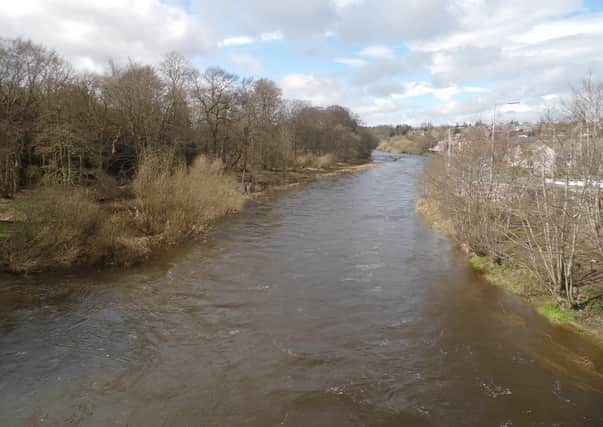Anglers’ orange South Esk river fears


Musselburgh and District Angling Association president Marc Anderson highlighted the on-going issue on the river near Dalkeith where the water has turned orange.
He said: “This is not a new issue. We’ve complained for some time about pollution in the river, but the situation is getting worse and worse.
“All sorts of wildlife is now in danger.”
Advertisement
Hide AdAdvertisement
Hide AdMr Anderson fears that otters, kingfishers, salmon, sea trout, trout, grayling and swans are at risk and stressed that urgent action must be taken to protect the river.
He explained that a disused pit drain was likely to be causing the change in water colour as it contains iron ochre, a naturally occurring metal. When mine water is released into a river, the iron that is present in the water settles on the bed of the river causing the orange staining.
Aquatic ecologist from Forth Rivers Trust (FRT), Iain Reid, led invertebrate monitoring research over the past month to examine how the water from the adit was impacting river life forms.
An FRT spokesman said: “He found that the mine discharge was affecting the type of invertebrate species present and the overall number. Fewer, less sensitive invertebrates (were) found below the minewater discharge than above it. Less invertebrates means less food for fish, birds and mammals and may serve as a warning that action needs to be taken.”
Advertisement
Hide AdAdvertisement
Hide AdMr Anderson urged more action from the Scottish Environment Protection Agency (SEPA) and the Coal Authority to prevent an “environmental disaster”.
He stated: “We need action from the Coal Board, SEPA and other authorities now as the river is heading for an environmental disaster.”
The Coal Authority and SEPA have a non-statutory programme of mine schemes in place, which treat around 122 billion litres of water every year.
Thomas Mills, head of environment at the Coal Authority, said: “We understand the recent concerns of the community regarding the orange staining in the River Esk.
Advertisement
Hide AdAdvertisement
Hide Ad“We have been monitoring rising water levels in the mine workings of the former Bilston Glen colliery since coal mining ended in 1989. “Prior to April 2020, the impact of an old mine water discharge on the South Esk had always remained localised, but the sustained period of dry weather since March has seen river levels fall.
“The reduction in river flow and the recently increased flow of mine water means that the orange discolouration in the river has become much more visible.”
He added: “In conjunction with SEPA, the Coal Authority is undertaking comprehensive monitoring and plans to install a £1 million temporary treatment scheme that will clean the mine water before it enters the river.
“Once the treatment scheme is operational the discolouration will quickly be removed.”
Comment Guidelines
National World encourages reader discussion on our stories. User feedback, insights and back-and-forth exchanges add a rich layer of context to reporting. Please review our Community Guidelines before commenting.